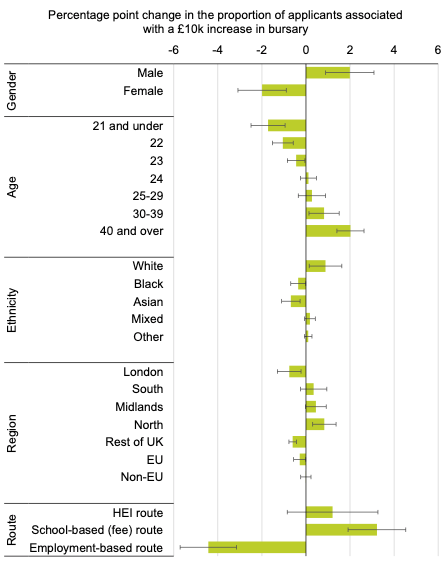
Bursaries for postgraduate initial teacher training (ITT) are a key policy tool, used by government to attract more people to enter teacher training, particularly for high-priority subjects that might otherwise struggle to recruit enough teachers. Bursaries also represent a significant amount of government expenditure: up to £129 million for the 2022/23 trainee teacher cohort.
Research on the impact of bursaries has tended to focus on the effect on trainee numbers. However, relatively little research has focussed on the impact on the type of applicants who apply to teacher training, and the implications for diversity and equality in the teaching profession.
Our new analysis of data from the Universities and College Admissions Service (UCAS) reveals that while increases in bursaries do tend to lead to more applicants, they also change the composition of applicants. While bursary increases are associated with increases in the number of applicants across all groups, some are more responsive to financial incentives than others, which changes the proportions of applications with different characteristics.
We find that bursary increases are associated with a greater proportion of male and white applicants, career changers and those from the north of England, and a smaller proportion of applications to employment-based training routes.

There are six key findings from the analysis, many of which have important implications for policy making.
1. Bursaries incentivise more applications
In years when the bursary for a subject was higher than other years, the number of applications tended to be higher, on average. We estimate that a £10,000 increase in bursary is associated with a 29 per cent increase in applications. As NFER reported in the spring, the reverse is also true: bursary reductions can be used to dampen demand for subjects that would otherwise recruit more teachers than are required. The analysis confirms DfE internal analysis, reported by the National Audit Office in 2016, which showed ‘a statistical link between bursaries and the number of applications to train’ with exactly the same level of responsiveness.